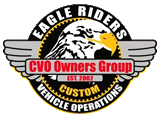There are reasons .. The S&S pump will scavenge more oil , less aeration induced into the oil , better oil pressure at idle , and less peak pressure, more pressure is more power to turn the pump , less oil in cranks case is free power, cam plate has bushings in it better wear, better oil control due to pinion fitment and plate is more ridge which will aid in reducing pinion wobble which directly effects cam timing. If you have the money I feel its a well spent upgrade. If not the stock parts do work and its not like you are going backwards.
Pressure relief valve on S&S cam plate has been set at the factory
to relieve at approximately 40 psi. Using a caliper note the distance
from the end of the pressure relief screw to the pressure relief nut
and note this dimension for future reference.
The pressure relief valve is designed to keep the pump from
building excessive oil pressure at high RPM’s. Resist the temptation
to turn the screw in to try and raise the low rpm oil pressure. If your
engine has no oil pressure at idle, turning the pressure relief screw
in more will normally not help this condition, as this pressure will
be below the operating point of the pressure relief valve. If you do
adjust the pressure relief valve to something other than the
factory setting. We recommend not turning it more than 1/2 turn at
a time. One half turn of the screw will move the adjuster .025"which
typically changes oil pressure approximately 4 psi, but other
factors may effect the actual change in pressure.
Turning the pressure adjusting screw in more than necessary will
cause high oil pressure at high RPM’s but will also needlessly raise oil
temperature and rob horsepower without really raising low rpm oil
pressure. Ideally you want to keep your oil pressure as low as you can
while keeping the tappets quiet.
•
 Author
Topic: cam plate (Read 12828 times)
Author
Topic: cam plate (Read 12828 times)

